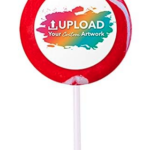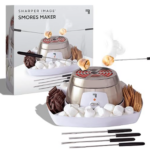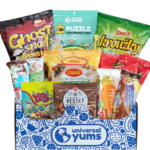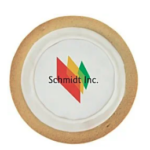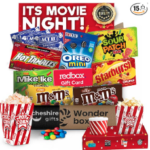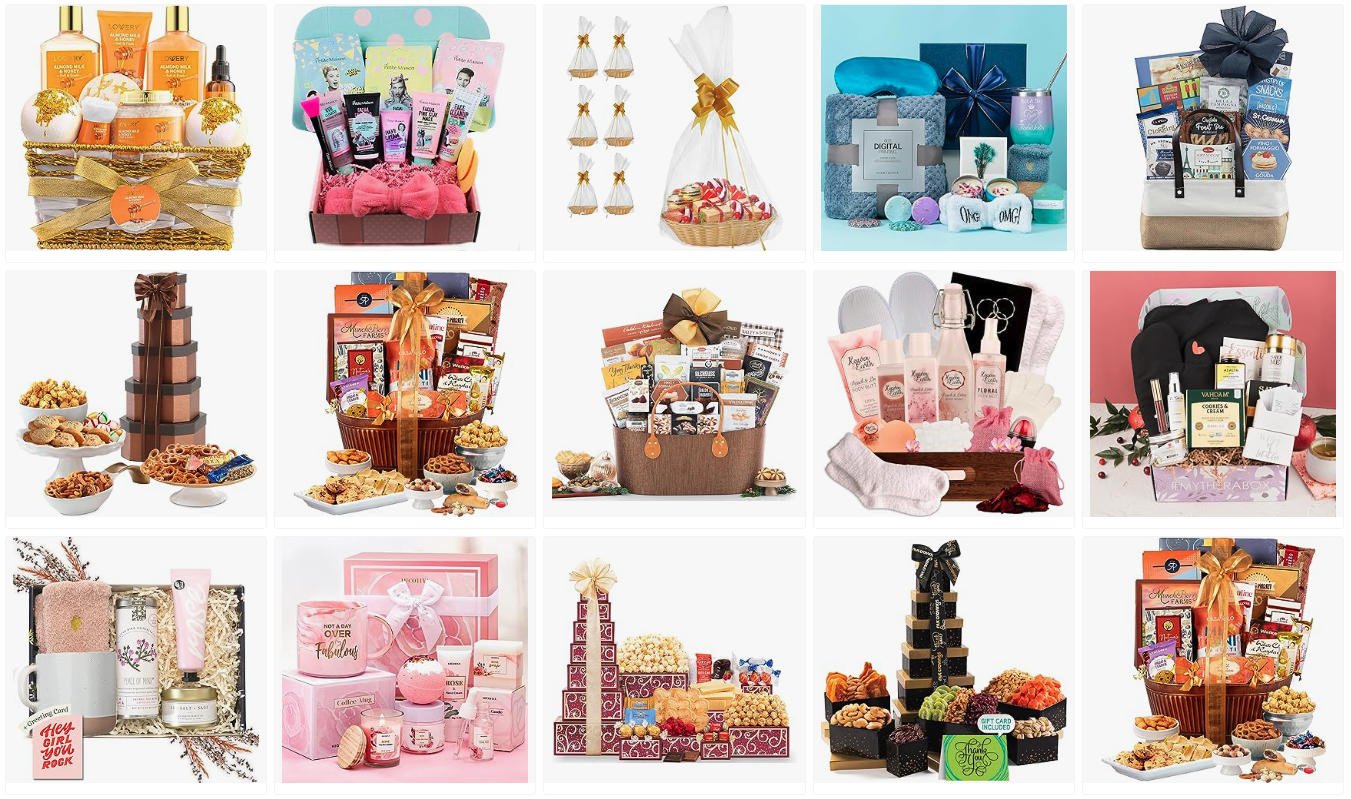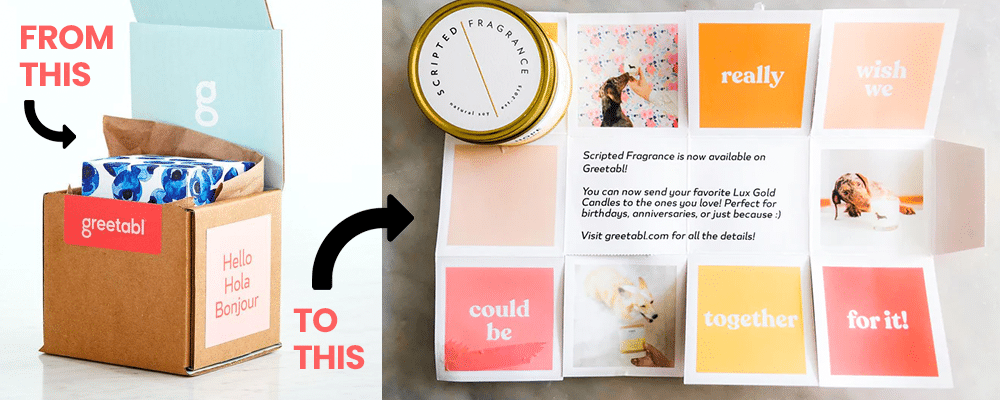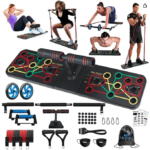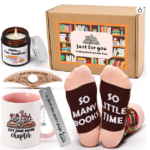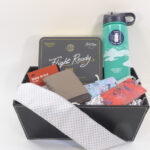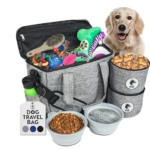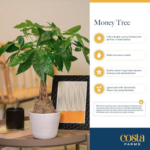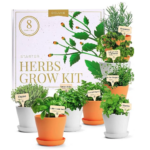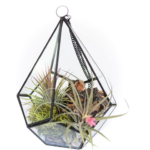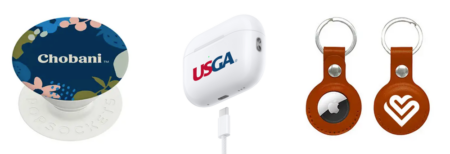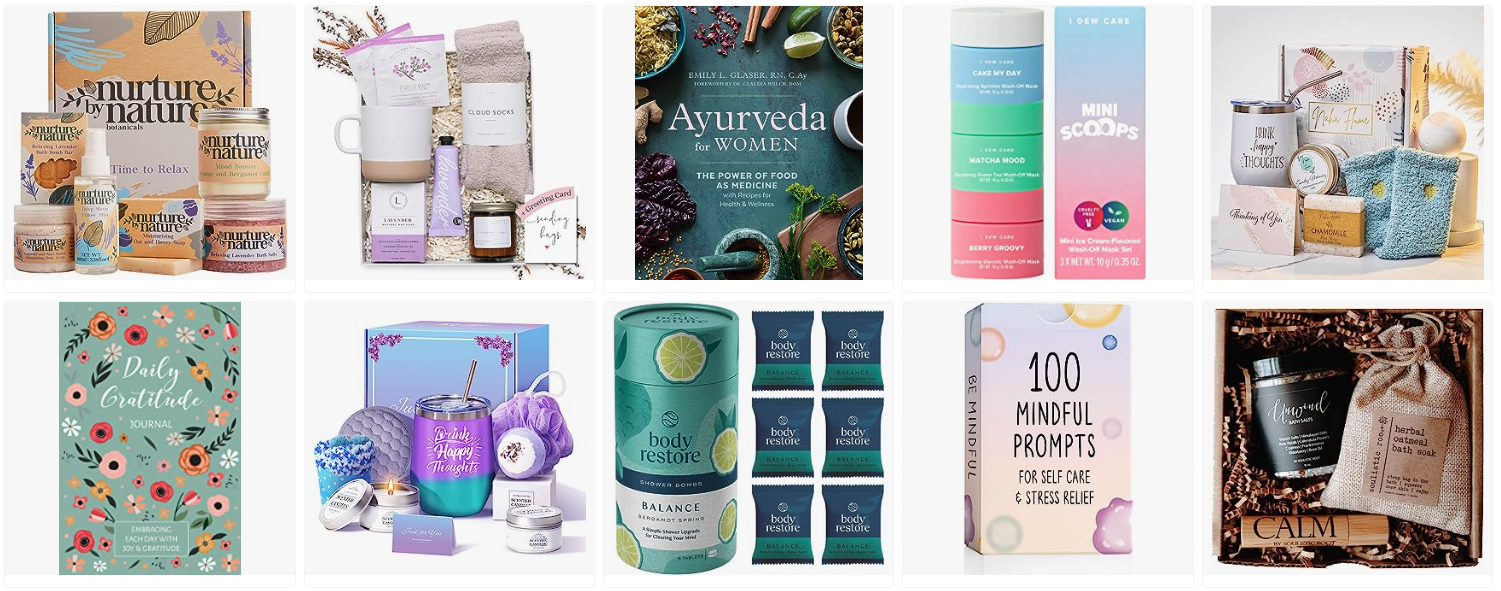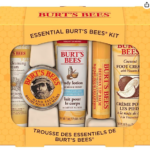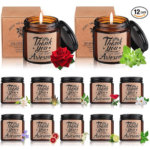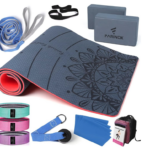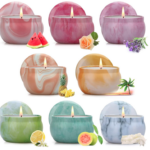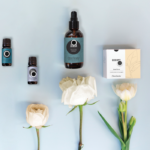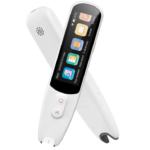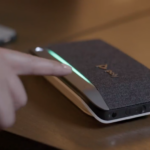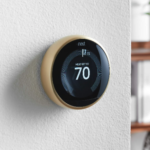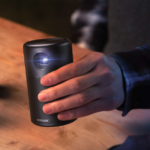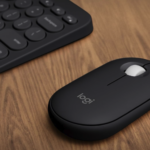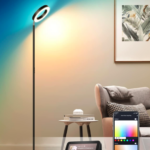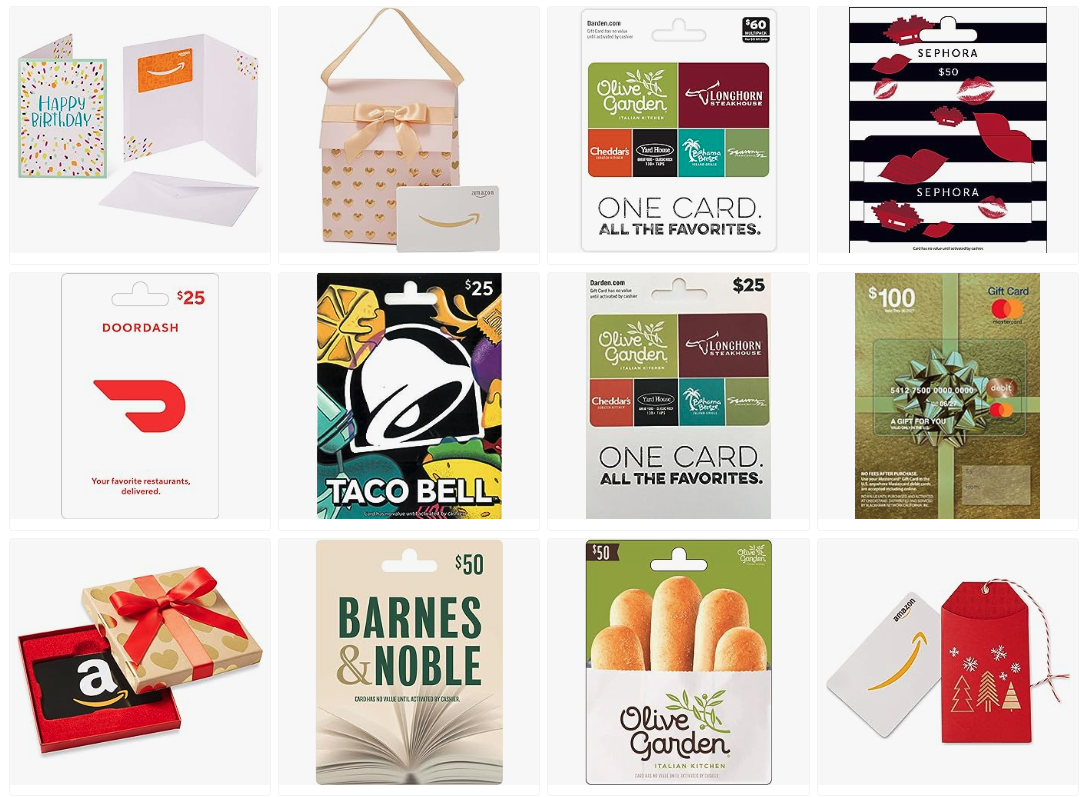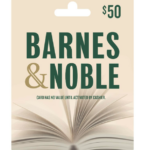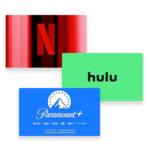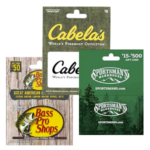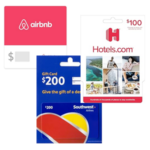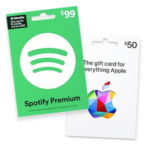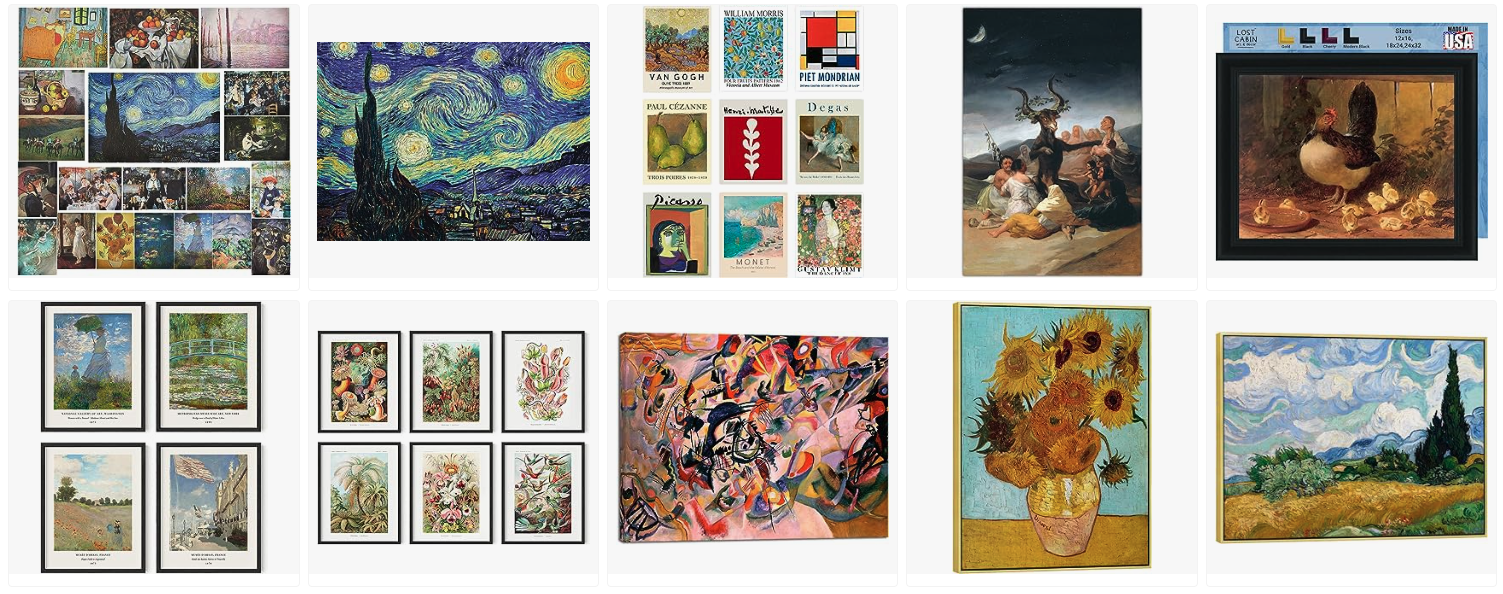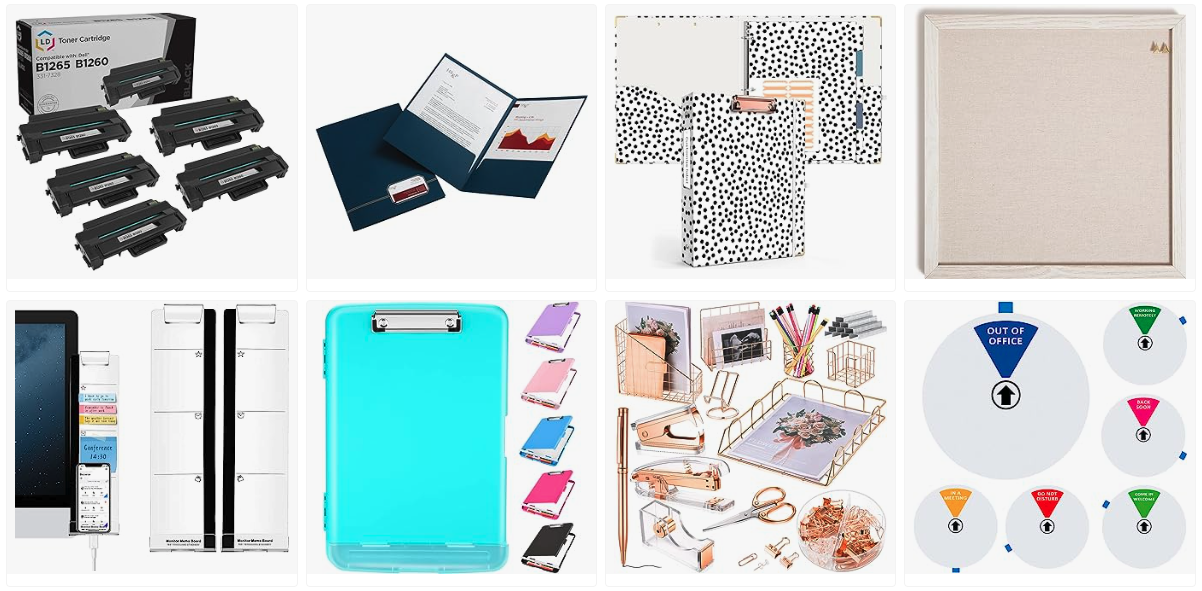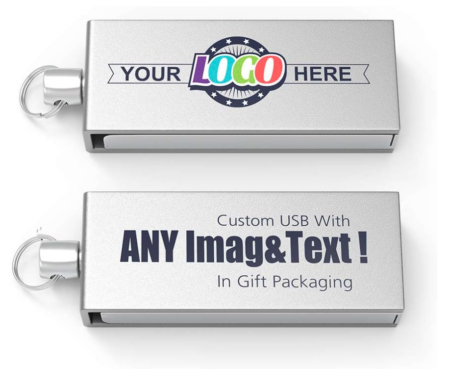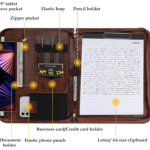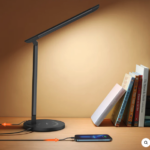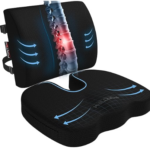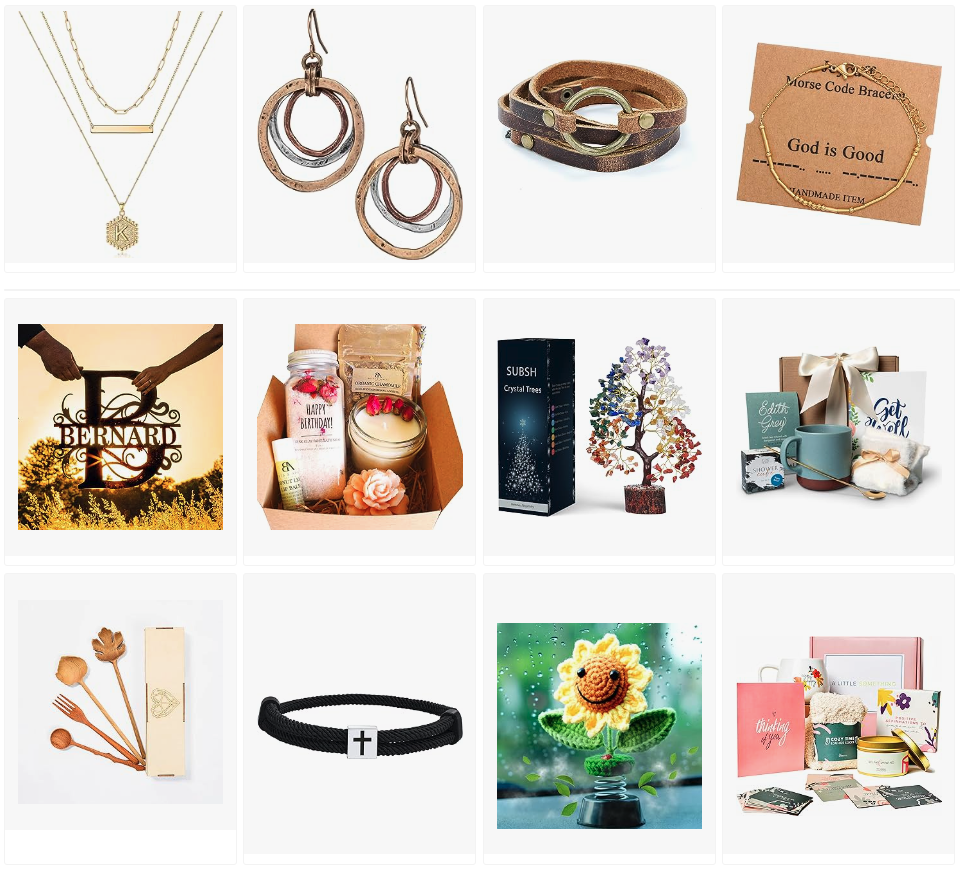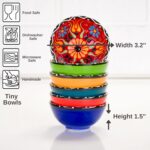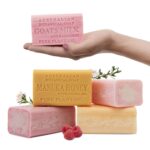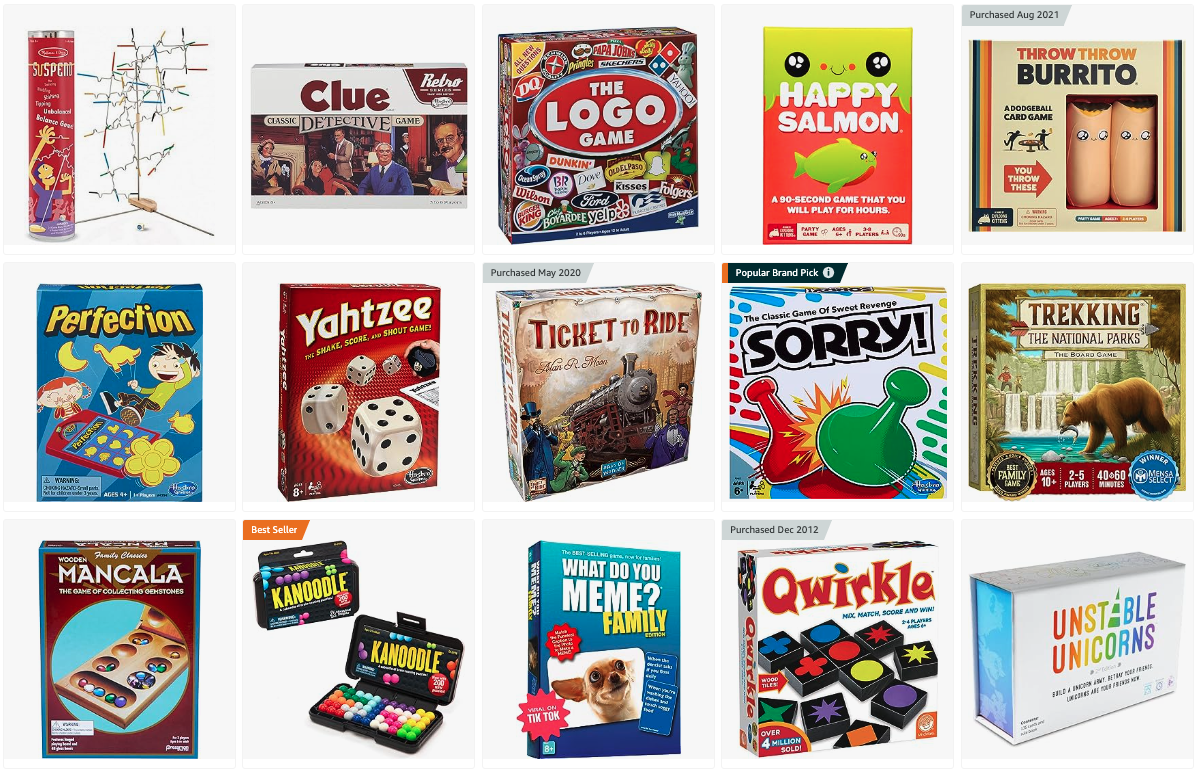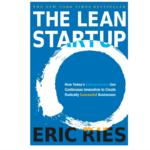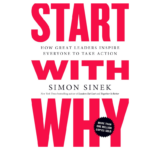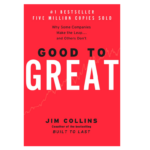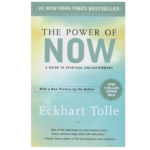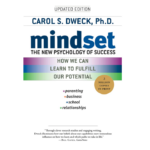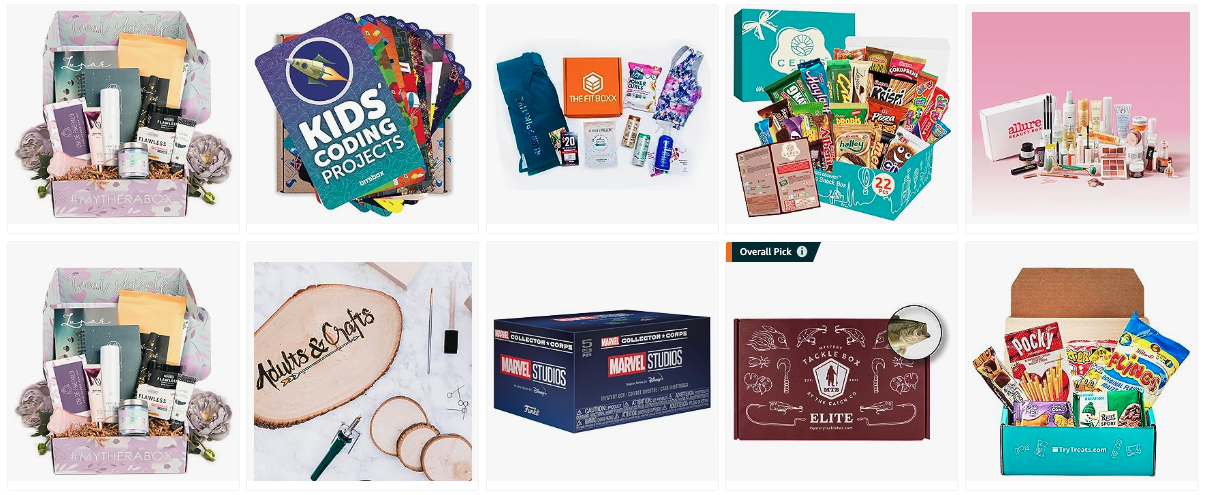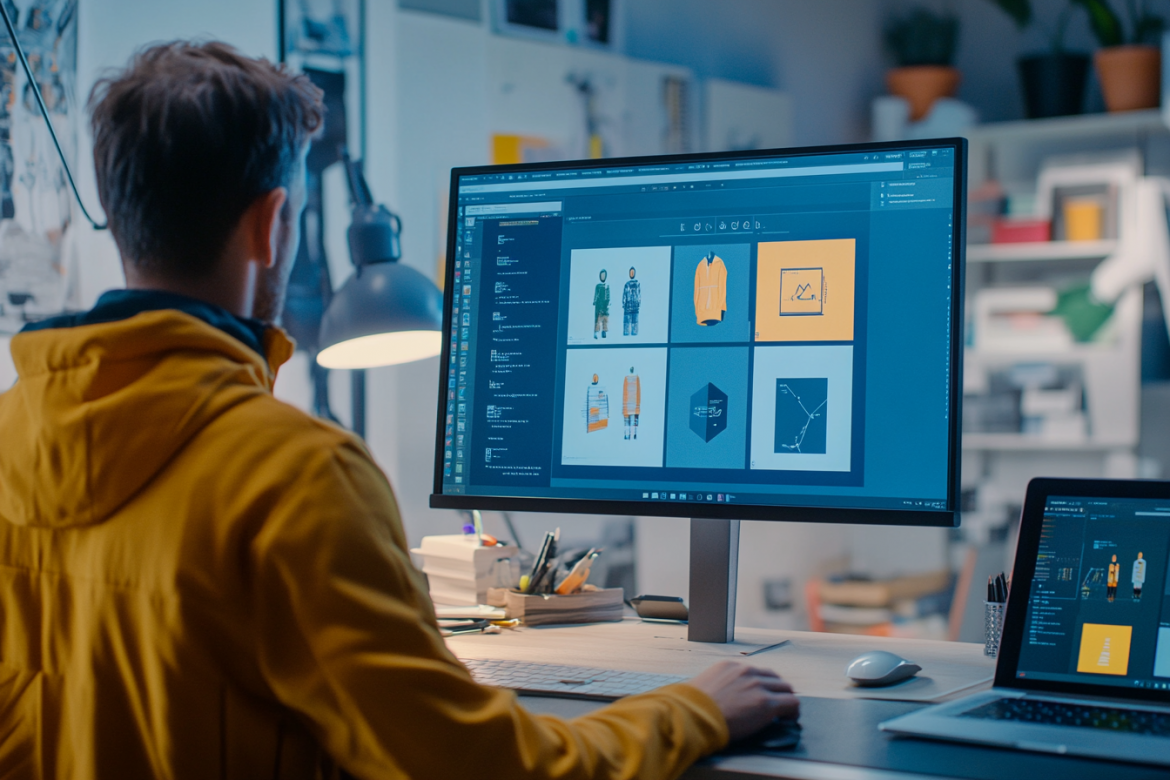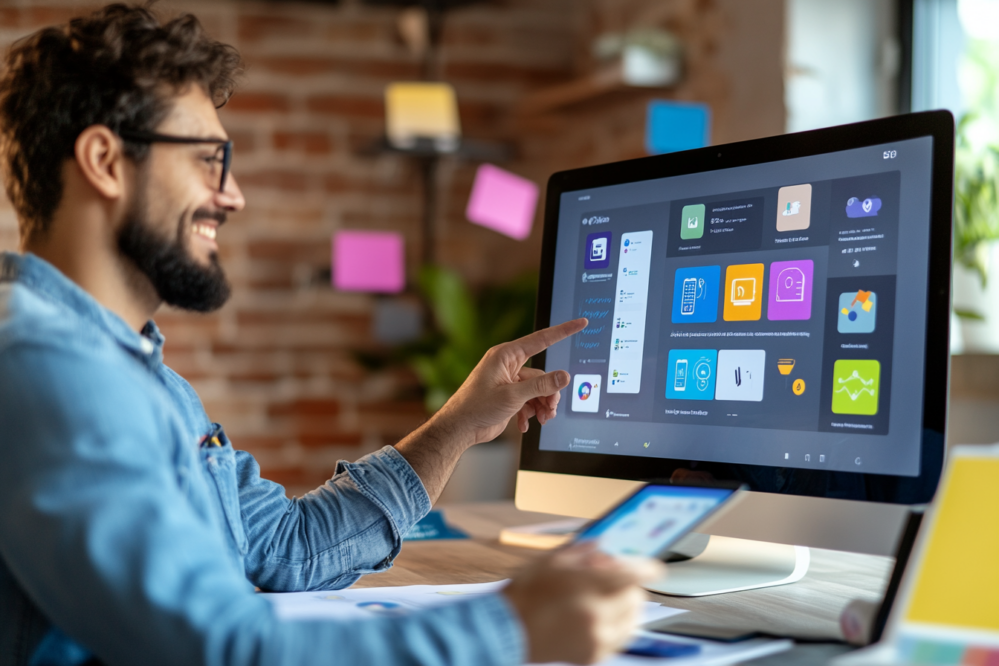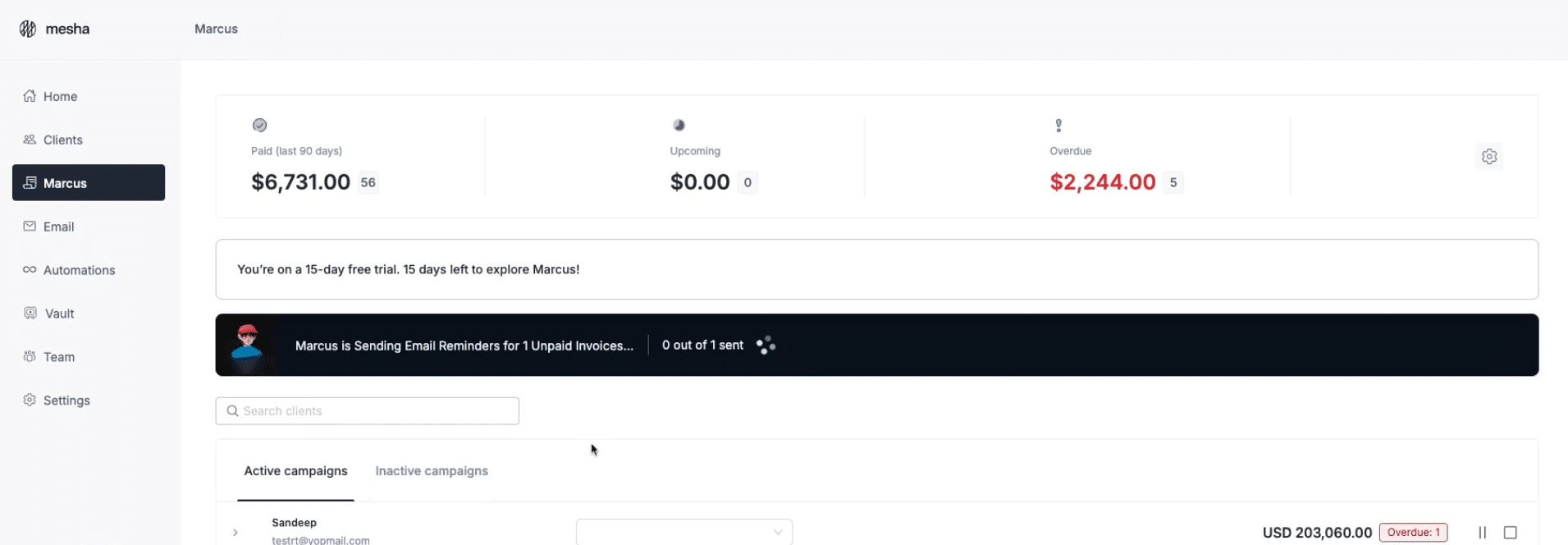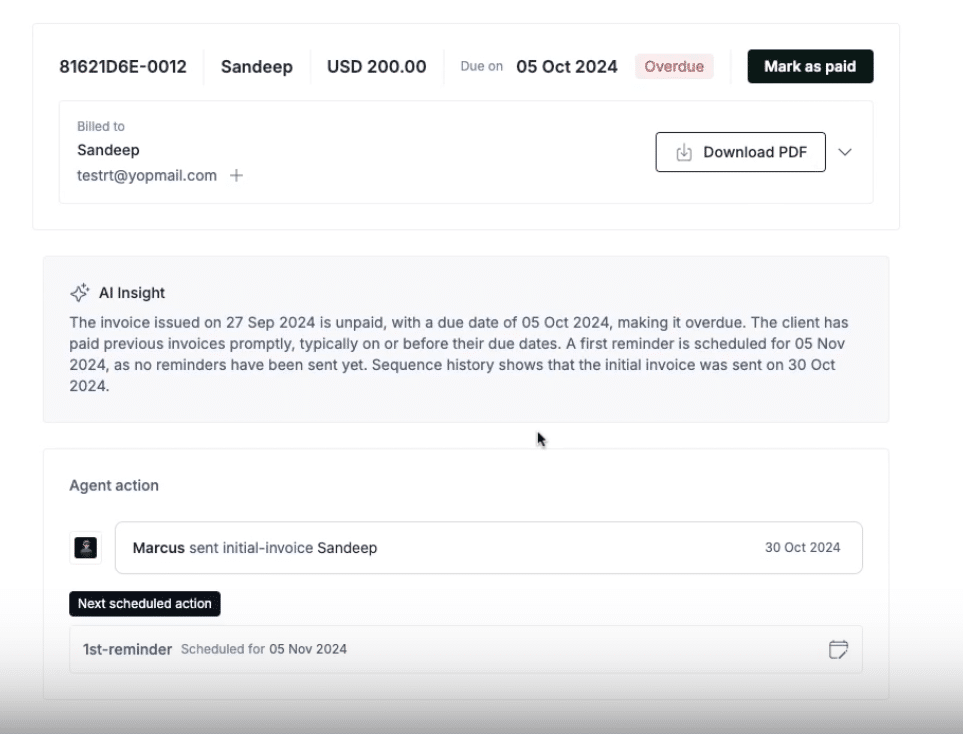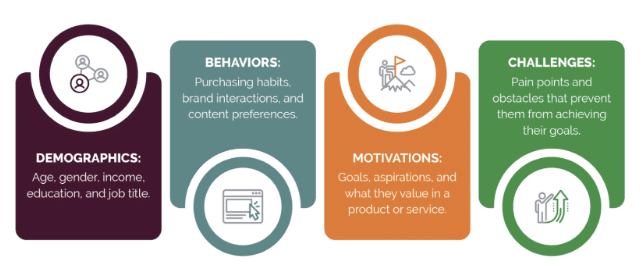Looking for exceptional client gifts that make a lasting impression?
Strategic gift-giving goes beyond the holiday season. Whether you’re searching for corporate client gifts, personalized presents, or unique thank-you items, this comprehensive guide features over 150 carefully curated gift ideas your clients will actually like.
From luxury client gifts to budget-friendly options, we’ve organized these professional gifting suggestions into 17 distinct categories to help you find the perfect way to show your appreciation.

Get Weekly Freelance Gigs via Email
Enter your freelancing address and we’ll send you a FREE curated list of freelance jobs in your top category every week.
Let’s explore how to strengthen your business relationships through meaningful client gifts.
Treats … with a Twist
Treat boxes full of tasty snacks (like this one 😳) make excellent client gifts. There are so many creative options to fill boxes with your client’s favorite goodies but the more original you can be with these treat boxes, the better. Remember, depending on the size of business your client is running and the time of year, they might be receiving tons of treats. Do something to help yours stand out.
You can start with these ideas:
Insane Break Room Treat Box
Give your client a free pass from stocking their break room and fuel their team with all sorts of snacks for the office break room. You’ll be the hero of the office. You can even use something like CraveBox to automatically send them new treats on a regular basis.
Candy Bento Box
Fill a bento box with an assortment of fun candies or chocolate for the client with a sweet tooth. Or just use a company like Sugarfina to find the perfect candy bento box for your client.
Custom Lollipops
The store ‘Just Candy‘ can print your client’s logo or photo right onto the lollipop. This is probably one of the most unique edible gifts they’ll be talking about all over the office.
Mini, Premium Cupcakes
Baked by Melissa’s mini cupcakes taste gourmet but come in a size made for sampling. Arrange a fun assortment for your client and make them the office favorite as they pass around the box to share with their coworkers.
Gourmet Cookies
Give a box of fresh gourmet cookies from Christie Cookie Co. for the client who loves to munch on sweets. There’s nothing better than a really good fresh cookie.
Cupcake or Dessert Sampler
A decadent assortment of mini cupcakes, macarons, or chocolate truffles is a real treat. And the variety ensures there will definitely be at least one or two flavors your client really loves. They can share the rest.
DIY Cookie Decorating Kit

Include pre-made cookie dough, icing, and decorations so your client can channel their inner artist by decorating cookies before scarfing them down. Or, if you’re short on time, you can just buy a pre-made kit with all the stuff you need for your client to have a fun time decorating (and eating) cookies.
S’mores Kit
For the client who loves camping vibes, help them make the ultimate s’mores with marshmallows, chocolate, and graham crackers. Plus a fun tabletop s’mores maker will have them talking about your for months.
International Snacks Box
Treat your client to exotic sweets and crunchy snacks from around the world to satisfy their sense of adventure. UniversalYums will send your client a new treat from a different country every month!
Custom Baked Goods
Work with a local bakery or a company like 4Imprint to make custom cookies, cakes, or pies just for your client. That extra effort takes a boring treat to the next level.

Popcorn and Movie Night Box
Get the popcorn popping with kernels, toppings, seasoning, candies – everything needed for an ideal movie night. For an added bonus just get this bundle which also includes a Redbox gift card for the perfect movie night.
Breakfast or Brunch Box
If your client is a morning person, surprise them one morning with pastries, sweet breads, jam, coffee, and other breakfast favorites delivered right to their office.
Chocolate Lover’s Box
Curate a box filled with gourmet chocolate bars, truffles, nuts, pretzels, and anything cocoa. If you want to get really elaborate, get a fancy collection of chocolates from somewhere like Compartes.
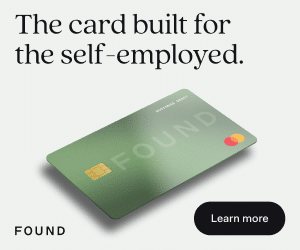
Gourmet Snack Box
Sometimes, the lat thing your client wants is another sugary treat during the holidays. In that case, try a gourmet snack box with dried fruit, nuts, crackers, cheese, and charcuterie pairings.
Gift Boxes or Baskets
Pre-packaged gift boxes take the guesswork out of giving. Choose a theme your client will love and include a personal note. These don’t have to be food-themed, but they can be. The quirkier and more unexpected the better when it comes to gift boxes or baskets. Remember, you’re aiming to put a smile on their face so they have a positive association with you and your company.
Here are some ideas to get you going:
Personalized Client Gift Boxes
Greetabl’s custom printed gift boxes with photos and a message create an incredibly thoughtful client gift. You get to pick the design, what goes inside, and a special message for your client.
Fun Gift Baskets
Harry & David, Hickory Farms, and Man Crates have interesting themed baskets with all kinds of delicious food and other items. Just have fun with it.
Chocolate and Sweets Basket
You can’t go wrong with baskets overflowing with chocolate, candy, cookies, cakes, and sweets galore. You could go with this sweet treat basket filled to the brim with yumminess or use this wooden foldable basket/tray with fruit for a unique touch.
Fitness and Workout Gift Set
If sweet or savory treats are not your client’s cup of tea, there are lot of other options. For starters, try a fitness set. They can include resistance bands, foam rollers, massage balls, workout towels, water bottles, or other exercise gear.
Art and Creativity Gift Box
Spark inspiration with art supplies, DIY crafts, decorative papers, coloring books, sketchpads, and more. You could also order an elaborate art set and add a nice artistic card.
Book Lover’s Gift Box
Have a client who loves to read? Literary fans will love a gift basket with books, blankets, candles, bookmarks, bookends, coffee, and tea. This box on Amazon includes socks, a bookmark, a candle, a mug and more!
Travel and Adventure Gift Box
Pack a TSA-friendly pouch with neck pillow, eye mask, slippers, earbuds, snacks, essential oils, and more flight must-haves. To take it up a notch, you could even include a Southwest Airline Gift Card (WHAT A GIFT!) or gift cards to other travel brands like Hotels.com or AirBnB.
Pet Lover’s Gift Basket
If you’ve got a client who’s obsessed with their fur babies try building a basked with pet treats, toys, a branded bandana, picture frame, brush, and more. Amazon has tons of great options.
BBQ and Grilling Gift Basket
Everything your client needs if their into cooking over the grill: sauces, rubs, spices, grill brush, meat thermometer, apron, mitts, beer, and BBQ tools. Assemble it yourself or get one from Thoughtfully.
Greenery or Plants
Bring nature indoors with these living gifts your clients can nurture. Not only do they really make a desk or workspace more beautiful, but they also become a constant reminder of your partnership in business. And if your client pulls a How to Lose a Guy in 10 Days and let’s your “love fern” die, don’t hold it against them. Just send them a new one!
Here are a few green-focused ideas:
Desk Blossom Kits
These fun plants make fun client gifts for two reasons: they are just the right size for your client’s desk and include a positive message on each plant. We really love the tomato option that says, “Grateful for you from my head to-MA-toes!” This blossom kit is just $12.95.
Desktop Succulents (Customizable too!)
Sending single plants or groups of small succulent gardens that come pre-packaged in a planter as client gifts is easy with The Succulents Box Store. Unlike traditional flowers, succulents are low maintenance and have the potential to live much longer! That means these client gifts will stay on your client’s desk for a long time—reminding them of your partnership and your own thoughtfulness.
Money Tree
When it comes to business partnerships, money matters. And according to feng shui, the money tree plant attracts wealth and prosperity. The perfect gift for success-minded clients! While you’re at it, why not include the book by the same name from one of my personal favorite authors.
Aloe Vera Plant
Known for its healing properties, Aloe Vera plants also purify the air and can grow happily on any desk for a long time which means a fond memory of you each time your clients come into work.
Bamboo Plant
Bamboo is regarded as an eco-friendly plant and is said to bring calmness, prosperity, and good luck into a space. What better way to start off the new year with a client than with a gift of desktop bamboo for good luck!?
Terrarium Kit
For a more hands-on experience, you can let your client create their own miniature world with one of these fun DIY terrarium kits.
Herb Garden Kit
If you’ve got a client with a green thumb or a real knack for cooking, you can’t go wrong with an herb-growing kit. They can grow their own herbs like parsley, basil, oregano right at home or in the office. Amazon has a great collection of high-tech or low-tech options.
Bonsai Tree
Bonsai trees are symbolic of health, peace, order, and tranquility – ideal gifts for your Zen-seeking clients. You can send them an artificial one that lasts forever with no maintenance, or send them a live one to be loved and trimmed. The art of bonsai can be a fun work-day hobby to try out for the new year.
Air Plants
I had never heard of these before, but Air Plants are plants which grow outside of soil. With no soil required, air plants are super low maintenance, perfect for clients who may not have a knack for taking care of plants.
Swag for Their Brand
Custom branded swag is a foolproof client gift. It aligns with their brand, provides lasting value, and gives them something cool to show off. But be aware here client don’t want stuff with YOUR brand on it, they want stuff with THEIR brand on it.
Sending them swag with your logo or branding is self-serving and the entire point of client gifts is to be selfless and focused on the client. So when ordering swag, get it with their logo and watch their faces light up when they receive their gift.
And you don’t have to shop at 100 different places to find a variety of promo items either. Sites like ePromos offer almost anything you can dream up. From drinkware, to apparel, to cool tech gadgets—you can find everything you need all in one place with ePromos.
Here are just a few ideas you can look into
Stickers
Fun stickers with your client’s logo or branding make great swag. Clients can stick them on laptops, water bottles, notebooks – anywhere they want! Try using a service like StickerShoppe or StickerGiant to print custom, branded stickers for your client. Amazon also has lots of customizable sticker vendors. Or you can get personalized stickers too.
Enamel Pins
Personalized enamel pins are having a major moment. Get your client’s brand or logo made into pins for them and their team to wear proudly around the office or anywhere. Try somewhere like SignaturePins to order custom pins with your client’s brand.
Clothing
Imagine the smile when you give your client hoodies, t-shirts, or hats with their own branding. It’s a client gift they can’t help but love. Get quick turnarounds and quality apparel from sites like 4Imprint and VistaPrint.
Drinkware
Get your client’s logo or brand colors printed on travel mugs, tumblers, or water bottles. Useful swag they’ll use daily. As a plus, it’s a daily reminder of your partnership which is always good for business. Try DiscountMugs or CustomInk to get started.
Tech Gadgets
Put your client’s brand on power banks, phone cases, Airpod cases… so many tech gadgets you can customize with your client’s cool branding. And more tech ideas below in the technology gift section. For some great ideas and affordable options, try Crestline and ipromo.com.
Self-Care
Help your busy, stressed-out clients practice more self-care with a rejuvenating gift. Self-care is important and if your client is running a business, managing a team or seems to generally have a stressful job, the gift of “self care” can go a long way!
Here are a few ideas:
Hand Care Kit
Help your client moisturize their hard-working hands with nourishing salves, oils, creams and scrubs from Burt’s Bees. With natural ingredients like coconut oil, shea butter and vitamin E, a hand-care kit rehydrates cracked, dry skin for major relief.
Candles
Light an artisanal soy wax candle from Homesick layered with comforting, memory-evoking scents. Or gift a simple soy “Thank You” candle as an office supply expressing gratitude.
Wellness Box
Promote relaxation and self-care with a wellness gift box including Yogi herbal tea samplers, essential oils, fizzy bath bombs, hydrating face masks, and other pampering treats. The ultimate reset kit.
Yoga Mat and Accessories
Equip your yoga-loving client with quality mats, non-slip towels, supportive blocks and straps from top brands like Santiny, Manduka, and Retrospec. Or take your client out for some yoga and enjoy quality time together.
Weighted Blanket
This option will give the gift of calm to your client. When you’re wrapped in a weighted blanket, it feels like getting a big comforting hug, which can relieve stress and anxiety. Try premium options from Bearaby or Gravity.
High-Quality Headphones
Gift premium noise-canceling headphones from Bose or Sony for tuning out distractions. With plush ear cups and adjustable fits, clients can relax to their own audio world. I gave some Bose headphones to a few clients last year and they absolutely loved them.
Scented Candles
Set a relaxing mood with hand-poured soy candles scented with essential oils. Popular options from Homesick, Boy Smells, and Voluspa feature soothing scents like lavender, eucalyptus, and sea salt.
Personalized Journal or Notebook
Inspire daily writing or planning with a stylish custom notebook or journal. Add their name or quote using premium brands like Minted, Rifle Paper Co., or Leuchtturm1917.
Essential Oils Set
Sample various essential oils promoting wellness through aromatherapy. Popular starter sets from Eden’s Garden or Plant Therapy make a great option that will impress without breaking the bank..
Aromatherapy Diffuser
Help your client transform their office or home into a relaxing oasis by infusing the air with essential oils using an ultrasonic cool mist diffuser.
Kitchen Gadgets
While kitchen gadgets might seem like an odd client gift at first, consider the fact that many offices have kitchens (which are notoriously NOT well stocked with cooking tools). Plus, everyone eats—whether at home or the office—and who doesn’t get a kick out of a fun new kitchen gadget?
Here are some ideas to try out:
Fancy Mugs and Tumblers
Elevate your client’s coffee, tea, or water with a stylish mug or tumbler from Corkcicle, Ember, or Yeti. It’s the kind of client gift they’ll use on an almost daily basis. So make it a good one.
Personalized Cutting Boards
Cutting boards engraved with your client’s name or initials make for frequent use in the kitchen. Or opt to engrave their company logo or a memorable inside joke or phrase that reminds them of your partnership.
Measuring Cups and Spoons
Measuring cups and and spoons are always breaking and needing an upgrade. Splurge on a premium set from Amazon.
Utensil Sets
Complete your clients’ kitchen tools with ergonomic, durable utensils for mixing, serving, and eating in style. These are great for clients to take home or show off in their office kitchen too.
Cool Tech for Work
Technology is one of the best kinds of gifts you can give to clients. And when technology makes a person’s work-life even easier, then it’s even more powerful.
Here are some great technology-at-work gift ideas for your clients:
Digital Assistant Devices
Spoil your clients with an Amazon Echo, Google Home, or Apple Homepod to play music, set timers, manage calendars, automate smart tech, and more with just voice commands.
Smart Pen for Note-Taking & Translating
Help your client go digital by recording handwritten notes and synching them to cloud services with a smart pen. Popular options from Livescribe.
Conference Speakerphone (Plus Music Speaker)
Give your clients the gift of crisp, clear business calls with speakerphones from Poly or Ooma.
Smart Thermostat for Home Office
Give your client the power to control heating and cooling from anywhere with a smart thermostat. I prefer Nest.
Mini Projector
If your client is constantly presenting on-the-go, the Anker’s Nebula Brand can’t be beat when it comes to projectors. Most of their projectors come with a 100” screen from palm-sized HD projector with WiFi and Bluetooth. Insane.
High-Quality Webcam
Give your client the gift of an HD professional look on video calls and webinars with sharp footage by giving them a high-quality webcam from Logitech (lower price) or Razer (higher quality). You won’t be disappointed and your client will love it.
Wireless Keyboard and Mouse Set
Help your client ditch wires cluttering their desk with a Bluetooth keyboard and mouse for flexible positioning. Logitech and Anker both make great options.
Smart Desk Lamp
Your client can automate lighting schedules and customize brightness with app-controlled smart lamps from Lumin, Yeelight, and Philips Hue. Which means they can always walk into a well-lit office in the morning! A great gift, when you think about it.
Gift Cards
Let’s face it: sometimes, you’re not sure what to get your client. And, frankly, sometimes the ability to choose how to spend their gift is a gift in and of itself for clients who just want to indulge every once in a while.
Take time to get to know your client enough that you can find a gift card they’ll actually use and enjoy. Here are just some ideas:
Amazon Gift Card
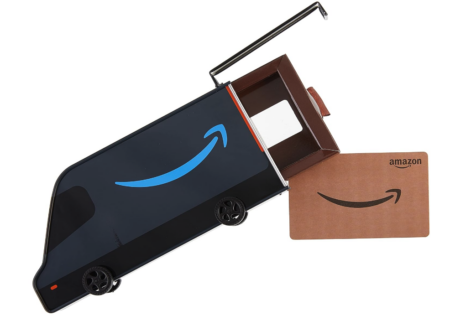
With everything under the sun available on Amazon, a personalized Amazon gift card makes an ideal “choose your own” present. Add a customized gift message for a personal touch.
Popular Restaurants
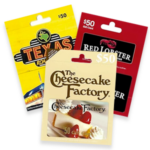
Give clients a fun night out on you by gifting gift cards to their favorite local restaurants, whether Italian, sushi, BBQ, brunch spots, and more.
Online Retailers
Let clients pick out something special with gift cards to popular online shops like Target, Sephora, Nordstrom, REI, and more aligned with their interests.
Spa or Wellness Centers
Treat stressed clients to ultimate pampering with gift certificates for luxury massages, facials, body treatments and more at local spas and wellness centers.
Bookstores
Spark joy for bookworms with gift cards they can use at Barnes & Noble, Amazon’s bookstore, local indie book shops, or audiobook subscriptions like Scribd.
Tech Stores
If your client is a technology lover, they will appreciate getting to browse accessories and gadgets with gift cards to Apple, Best Buy, phone carriers, and other electronics stores.
Subscription Services
Let clients sample and switch up streaming content with subscriptions gift cards to Netflix, Hulu, HBO Max, Audible, Stitch Fix, Blue Apron and more.
Department Stores
One gift card opens up a world of possible fashion, home, and beauty purchases at department stores like Kohl’s, Nordstrom and more.
Outdoor/Sports Stores
Encourage new adventures with gift cards to outdoor retailers like REI, Dick’s Sporting Goods, Cabela’s and more.
Travel Booking Platforms
Kickstart future trips by covering hotels, flights and rental cars with credits and gift cards to Airbnb, VRBO, Hotels.com, airline miles programs.
Music Streaming Services
Treat clients to ad-free tunes with subscriptions to streaming music platforms like Spotify, Pandora, Apple Music, SiriusXM, and more aligned with their tastes.
Online Learning Platforms
Help clients skill up with gift cards granting access to virtual classes at MasterClass, LinkedIn Learning, Skillshare, CreativeLive, and more. This is the gift that keeps on giving by helping them develop new hobbies or work skills.
Art
Is your client an art-lover? This year, try sharing a beautiful piece to highlight in their home or workspace. You could try anything from custom, one-of-a-kind art to something a little more casual and fun.
Try any of these for the art-loving client:
Quality Piece of Art

Commission or purchase a painting, print, or photos through services like Minted and Artifact Uprising. The key here is to match the art style with the office or home style your client already has. If they’re more casual, don’t get something overly fancy. If they’re more modern in taste, don’t get a farmhouse-style piece.
Neon Sign
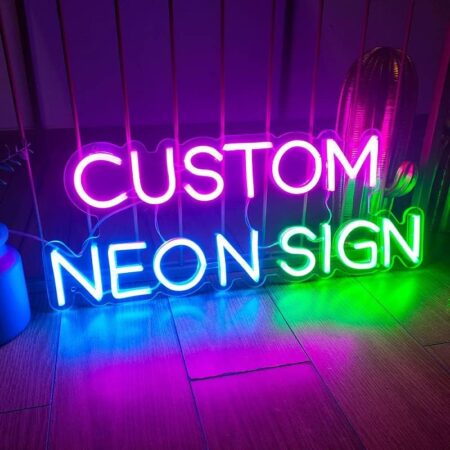
A few holidays ago, I got some of my clients neon signs of their own logo and it was a huge hit! A neon sign with an inspiring quote or your client’s company name makes a seriously cool client gift. You can find lots of sellers on Etsy or Amazon.
Custom Art About Your Client’s Company
Hire an artist on Upwork or Fiverr to create a custom digital drawing or painting depicting your client’s brand, their founder story, or some cool event that may have happened this year.
Charitable Donations
A client gift doesn’t always have to be something directly FOR them. Instead, consider making a charitable donation on their behalf. Many clients wish they could give more, but simply don’t have the cashflow or resources. For those kinds of clients, a donation can mean a lot—particularly if you take the time to identify what causes they care most about.

Here are some ideas (but remember, this is most impactful when you can figure out what charities or causes your client really cares about):
STEM Education Programs
Support youth STEM programs working to close the diversity gap in science and tech. This can have a lasting impact on the world and, if your client is into technology, their future workplace.
Racial and Social Justice Initiatives
Donate to organizations like the NAACP Legal Defense Fund, which fights racial discrimination through litigation, advocacy, and education. Your gift helps fund their ongoing battle for racial justice and equality.
LGBTQ+ Support and Advocacy
Support nonprofits like The Trevor Project, which provides crisis intervention and suicide prevention services to LGBTQ+ youth. Your contribution makes a direct impact in a community facing disproportionate levels of depression, anxiety, and discrimination.
Mental Health and Wellness
Help destigmatize mental illness and increase access to mental health services by donating to nonprofits like NAMI, Mental Health America, and Bring Change to Mind. Your gift expands programs reducing stigma, educating the public, and providing critical treatment.
Microfinance and Entrepreneurship
Fuel economic mobility worldwide by funding microlending platforms like Kiva, which offers loans to low-income entrepreneurs across the globe. As loans are repaid, your gift keeps revolving to uplift more communities through the power of entrepreneurship.
Arts and Cultural Institutions
Keep arts alive in your community by funding museums, theaters, music programs, and more through your local arts council. Your gift promotes arts education, helps bring compelling exhibitions to your area, and makes the arts accessible to all.
Homeless Shelters
Help transition individuals and families out of homelessness through shelters like The Salvation Army, which provide housing, meals, counseling, job training and placement. Your contribution can change a life.
Animal Welfare
Support local no-kill shelters, rescue organizations, sanctuaries and conservation groups protecting animals. Your gift directly cares for rescue animals, funds spay/neuter programs, or protects endangered wildlife and their habitats.
Women’s Empowerment
Invest in female-focused organizations like Dress for Success, which empowers women to achieve economic independence by providing professional attire, career development tools, and a network of support. Your gift promotes the health, safety and prosperity of women.
Youth Mentorship Programs
Sponsor mentoring organizations like Boys & Girls Clubs of America, which provide guidance and leadership development for youth, especially those most in need. Your contribution helps kids and teens maximize their potential while building skills.
Clean Water Initiatives
Provide clean drinking water to those without through charities like charity:water, which funds wells, sand filters and other infrastructure bringing water access to rural communities worldwide. Your gift saves lives.
Food Banks and Hunger Relief
Get involved with hunger relief organizations like Feeding America network of food banks, supplying meals to food insecure individuals across the U.S. Your donation helps fight the epidemic of hunger faced by millions.
Education Scholarships
Fund college scholarships and financial aid programs so students can access higher education and create better futures. Your gift to education creates meaningful change.
Office Supplies & Tech
This might seem a bit boring, but every client needs to stock their office with supplies to get work done. You can fill in the gaps with these work essentials or spoil them with something special for the office too.
Here are some great places to start:
High-Quality Notebook
Give the gift of a classic Moleskine, the notebook brand creatives swear by for its smooth acid-free paper, durable bindings, and stylish designs perfect for notes or sketches. I also love Baron Fig’s notebooks and other supplies.
Stress Balls
Funny stress relief balls and desk toys printed with sassy quotes and sayings add flair while giving hands something to fidget with.
Customized USB Drives
Branded USB flash drives with your client’s logo make transferring, saving, and sharing files for work simple. Useful tech gift, great for building brand.
Tech Organizer
Cut down desktop cord clutter with the a desktop tech organizer which can bring some peace and organization to any client’s workspace.
Leather Portfolio or Padfolio
Your client will look polished taking a handcrafted, full-grain leather portfolio or padfolio to meetings or events. And if you splurge for a high-quality option, it’ll last for years—always keeping you top-of mind for your client.
Desk Lamp
Your client can brighten any desktop or workstation with minimal glare using the TaoTronics LED Desk Lamp, which offers flicker-free lighting and adjustable color temperature.
Premium Notebook or Planner
Stay organized in style with a fashionable yet functional planner or notebook from chic brands like Rifle Paper Co or Kate Spade.
Wireless Charging Pad
Drop and charge phones sans wires using a convenient Qi wireless charging pad like Anker’s Powerwave stand, which also holds phones upright for easy viewing.
Ergonomic Office Chair Cushion
Improve comfort during long work days with posture-improving seat cushions which also help with tailbone relief.
Experiences
Things are nice. But for the client who hates clutter or already has enough “stuff,” gifting them an experience is a great way to go. Plus, they’ll associate the fun, relaxation, or excitement they experience with you—another positive association that can lead to more business over the coming year.

Try these experiences for one of your clients this year:
Event Tickets

Giving tickets to a favorite sports team, concert, show, or festival creates an opportunity for your client to enjoy something they’re passionate about. Experiencing an entertainment event they’ll love is a client gift that provides lasting memories.
Custom Puzzle

Having a puzzle custom made from a meaningful photo or image for your client makes for an especially thoughtful and personal gift. As they put the puzzle together, they’ll enjoy reminiscing about the special moment or place captured.
Theater or Concert Tickets

Tickets to a hot theater show, symphony performance, or concert gives your client a chance to enjoy premier live entertainment and culture. Seeing a show they’ve been dying to experience but haven’t pulled the trigger on is an incredible client gift.
Wine Tasting or Winery Tour

For the wine aficionado, tours, tastings, and events at a local winery let your client learn about the winemaking process and sample different varietals. It’s a fun, educational client gift for oenophiles.
Cooking Class or Workshop

For clients with a passion for cooking, a hands-on cooking class is the perfect opportunity to gain new culinary skills and have fun with food. Trying new recipes and techniques together makes a experiential client gift.
Spa Day or Wellness Retreat

Full day getaways at luxury spas like Canyon Ranch or Miraval offer total relaxation through massages, facials, body treatments and more. Your stressed out client will appreciate an extravagant spa day client gift to unwind.
Hot Air Balloon Ride

Soaring above the landscape in a hot air balloon is once-in-a-lifetime adventure your client will never forget. Majestic views and a thrilling experience make hot air balloon rides an unbeatable client gift choice.
Escape Room
For the client who loves puzzles, mystery, and games, send them on an exciting escape room challenge. Working together to crack codes, follow clues, and ultimately escape makes for engaging, team-building fun.
Concert or Theater Tickets
Scoring tickets to an exclusive Broadway show, coveted concert, or major theater event lets your client experience premier live entertainment and culture. They’ll be thrilled by tickets client gifts to see major shows they love.
Sports Event Tickets
Get your sports-loving client into box seats or VIP sections at a big game for the ultimate fan experience. Exclusive sports event tickets deliver your client into the action and energy.
Art Gallery Opening or Art Class

Share your client’s passion for art by gifting tickets to a gallery opening featuring their favorite artist or a hands-on art class in painting, sculpting, etc. Artistic experiences make creative client gifts.
Outdoor Adventure Excursion
Treat your outdoor-loving client to a guided nature tour for hiking, rock climbing, kayaking, or other active adventures tailored to their ability level. Outdoor excursions are fun fitness focused client gifts.
Dance or Yoga Classes
For clients looking to exercise or learn something new, personalized dance or yoga classes allow you to take lessons together. Active couple’s experiences make healthy client gifts.
Private Tour

Surprise your client with exclusive access by booking a private tour of coveted local landmarks just for them. Having these places all to themselves with a personal guide is a memorable client gift.
Photography Workshop
For clients interested in photography, gift a specialized workshop with pro instructors to sharpen their skills. Hands-on learning creates a thoughtful client gift to fuel their hobby.
Flying Lesson or Helicopter Tour

The thrill seeker or adventurous client will be over the moon for an intro flying lesson at a local airfield or a helicopter tour over the city or coast. The sky’s the limit with these once-in-a-lifetime airborne experiences.
Cultural Event or Festival Tickets
Immerse your culturally curious client in new traditions, music, dance, food, and more by gifting tickets to a cultural festival or event tied to their ancestry or interests. It’s a chance to celebrate and connect.
Meditation Retreat

For your overworked, stressed out client, the gift of a getaway to an exclusive meditation retreat helps them unplug, reset, and refocus. Luxury retreats offer spiritual rejuvenation for burned out clients.
Golf Outing
Treat your golf-loving client to an unforgettable day teeing off at an exclusive, prestigious golf course they otherwise couldn’t play. Tee time at renowned courses makes an incredible client gift for fans of the sport.
Personalized Shopping Spree

Pamper your client with a custom shopping experience by hiring a personal stylist to curate pieces tailored to their taste and style. Trying on looks selected just for them makes for an enjoyable client gift.
Behind-the-Scenes Tour
Gift your client exclusive backstage access by booking a private tour that takes them beyond public areas at coveted locations like museums, theaters, stadiums, or breweries normally off limits. VIP sneak peeks provide unique client gift experiences.
Virtual Team Building
Remote teams will bond through fun online experiences like cooking classes, mixology workshops, scavenger hunts, or murder mysteries. Virtual events make engaging client gifts for distributed teams.
Something Thoughtful
Of course, all gifts should be thoughtful. But it’s important to note that not all gifts have to be expensive or elaborate. Sometimes a client gift that simply says “I see you” or “I get you” or “I respect you for who you are” can be meaningful enough to last for years in your client’s memory.

Maybe one of these thoughtful gifts speak to you?
Concierge Service
Give your client the gift of time and convenience with a personal assistant or concierge service for a day to take care of errands, bookings, planning, and more. Offloading tedious tasks is an incredibly thoughtful client gift.
Handwritten Note

In today’s digital age, a sincere handwritten note is a remarkably meaningful gesture. Thoughtful words of gratitude written on a nice card convey deep appreciation for your client.
Gratitude Video

Record a video personally thanking your client for their partnership and articulating why you value working with them. A heartfelt video message validates how much you cherish the relationship.
Recommendations List
Provide a custom guidebook to your client’s hometown or favorite travel destination, full of personalized dining, attraction, and activity ideas tailored just for them. It’s a thoughtful client gift display
Recipe Booklet
Collect your client’s favorite family recipes and compile them into a cherished heirloom recipe booklet. It makes a sentimental keepsake cookbook they’ll treasure.
Photo Album or Collage
Gather special photos and moments from your partnership into a custom photo book or collage print. These personalized photo gifts commemorate the good times.
DIY Craft or Artwork
Personally make your client a one-of-a-kind gift like a painting, knit scarf, poem, or other handmade craft to add an extra thoughtful touch. Custom creations show you care.
Handmade Gifts
Technology is fun. And mass-produced products can be more affordable. But a nice, hand-crafted piece can be much more meaningful and special. For that, you want to browse Etsy or Amazon Homemade.
Here are a few ideas you could explore:
Hand-Painted Ceramics
Find local artisans on Etsy who hand-paint customized ceramic pieces like mugs, plates or vases featuring your client’s preferred colors, prints, or designs. Unique ceramics become cherished gifts.
Monogrammed Items

Elevate basic gifts by having them professionally monogrammed with your client’s initials or name, like plush robes, duffle bags, towels and more. Customized items feel extra special.
Hand-Blown Glass Art
Gift stunning hand-blown glass art, like decorative sculptures, vases, or paperweights, crafted locally by skilled artisans. These colorful blown glass pieces become artful keepsakes.
Artisanal Candles
Locally hand-poured candles made from soy wax and essential oils in creative vessels, shapes, and scents make thoughtful client gifts.
Handcrafted Wooden Decor
One-of-a-kind wood cutting boards, serving boards, shelves, and decor hand-crafted locally by artisans create rustic, eco-friendly statement pieces. Clients appreciate homemade wood gifts.
Knit Blankets or Scarves
Cozy blankets, scarves, and other knitwear in soft yarns like cashmere or alpaca are lovingly hand-made to order in custom colors. Warm knit gifts show you care.
Tooled Leather Goods

Gift fine leather goods like journals, folios, wallets, or handbags painstakingly tooled and etched by hand at small local leather shops. Clients admire the artistry of these leather pieces.
Beaded Jewelry
Intricate hand-beaded bracelets, necklaces, rings, and earrings using things like semi-precious stones, crystals, and glass beads become one-of-a-kind client gifts. Each piece is unique.
Hand-sewn Quilt
Afghan quilts and patchwork blankets stitching together fabrics often become family heirlooms. Locally handcrafted quilts given as gifts convey thoughtfulness.
Handmade Soap or Bath Bombs
Support small businesses by gifting handmade artisanal soaps and bath bombs using natural, nourishing ingredients and essential oils. Clients appreciate these spa-like treats.
Handcrafted Paper and Stationery
Journals, notecards, invitations, and art papers made from fine materials using traditional letterpress techniques become extra special client gifts. Support paper artisans.
Just for fun
Inject some playfulness into your client gift-giving with these quirky and distinctive ideas that don’t really fall into any other category. They’re just…fun. And there’s nothing wrong with fun.
Try these fun ideas on for size:
Lego Set
For clients young at heart, Lego sets bring back nostalgia while sparking creativity. Fun kits for building cities, vehicles, buildings make playful client gifts.
Board Game
Entertain and bring people together with award-winning board games for family game nights or fun in the office. Classics like Monopoly or Scrabble make engaging client gifts. Or go outside the usual with something a bit more edgy, entertaining, or uncommon.
Laser Tag
Thrill-seeking clients will love fast-paced laser tag sets from brands like Nerf and Laser X. Just add people for an epic office or home laser battle!
Desktop Zen Garden
Mini zen gardens with rakes, stones and sand create peaceful, meditative moments right on office desks.
Mini Foosball/Pool Table
Clients can enjoy old-school gaming fun with compact pool, foosball, and air hockey tables designed for desktops and small spaces.
Virtual Reality Headset
Let clients escape into 3D virtual worlds with portable VR headsets. Great for gamers or clients who want to try fun VR experiences from anywhere.
Playing Cards
Push clients out of their comfort zone with unique, artfully designed playing card decks with creative motifs.
Novelty Apparel
Inject playfulness into your client’s wardrobe with silly graphic socks, novelty ties, or punny t-shirts.
Retro Arcade Machine
Give your grown-up client their own arcade game with mini machines preloaded with nostalgic 80s classics like PacMan and Space Invaders.
Desktop Basketball Hoop
Clients can shoot baskets any time with mini basketball hoops designed for office desks. Perfect for quick breaks or blowing off steam.
3D Wooden Puzzle
Challenge your client’s brain with 3D wooden block puzzles from puzzle company MIEBELY that require creative spatial reasoning to solve.
Indoor Bowling or Golf Set
Practice golf chip shots or roll strikes without leaving home using compact indoor bowling lanes and golf putting greens.
Books
Sometimes, a simple book can speak volumes (no pun intended) about your relationship with a client. By gifting a book you’re essentially saying: “reading this book made me think about you”—and that kind of thoughtfulness can go a long way.
I’ve included a few ideas below, but remember to be thoughtful about the kinds of books your client will really enjoy.
Business and Leadership
“Atomic Habits” by James Clear
Small changes that lead to remarkable results. Helpful frameworks for building lasting habits. One of my all-time favorite books. I have gifted this book many MANY times.
“Dare to Lead” by Brené Brown
Vulnerable, courageous leadership strategies based on extensive research.
“The Lean Startup” by Eric Ries
Central text on the lean startup methodology for iterative product development.
“Start with Why” by Simon Sinek
Discover your “why” or driving purpose to inspire others and promote lifelong fulfillment.
“Good to Great” by Jim Collins
How good companies achieve enduring greatness.
Self-Improvement and Personal Development
“The Power of Now” by Eckhart Tolle
Cultivating mindful presence to find inner peace.
“Mindset: The New Psychology of Success” by Carol S. Dweck
World-changing ideas around adopting a growth vs. fixed mindset. I received this book originally as a gift as well.
“Grit” by Angela Duckworth
Angela Duckworth’s secrets of success seen through the lenses of passion, perseverance, and scientific insights.
“You Are a Bad*ss” by Jen Sincero
Activating your inner bad*ss to start living fearlessly.
Subscription Boxes
You’ll really treat your client with a subscription box gift—which means they’ll get a gift from you every month for the next year. An ongoing delivery of surprises each month tailored to their interests can be just the thing to keep your partnership top-of-mind. Amazon has lots of great subscription boxes or find them all over the internet.
Here are some popular ideas to consider:
International Snack Subscriptions

For the foodie client, interesting international snack subscription boxes deliver new international flavors and snacks right to their door every month. It’s an adventure for the palate that exposes them to unique tastes from around the globe.
Book Subscription Boxes

Avid readers will be thrilled by book subscription boxes that send a surprise new release, hot genre read, or handpicked book each month. Exposure to new authors and genres makes a book lover’s dream gift. Try Once Upon a Book Club for starters.
Coffee/Tea Subscriptions
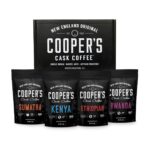
Coffee connoisseurs will appreciate monthly deliveries of artisan roasted coffees from around the world. Or tea drinkers can sample unique global tea blends. Broaden their horizons through new sips of indulgent drinks.
Wine/Beer Clubs
Expand your client’s horizons with a wine club that sends tasting samples of new vintages monthly. Or gift craft beer lovers a subscription to discover new breweries and beer styles delivered right to their door. Boozy bliss.
Beauty/Skincare Boxes
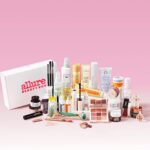
Give your beauty-loving client a monthly treat with customized boxes delivering deluxe samples of new makeup, skincare, haircare, perfume, and other pampering products from top brands.
Fitness & Wellness Boxes

Keep your health-focused client’s wellness routine on point with monthly boxes tailored to their needs, from workout gear to nutrition supplements, productivity tools to self-care treats.
Art Supplies Boxes

For creative clients, curated monthly boxes customized to their medium (acrylics, watercolors, mixed media) delivers art supplies tailored to inspire their inner artist each month. ArtSnacks pairs their monthly supply box with free online art classes.
Home Fragrance Boxes
Fill their space with scents from seasonal candles or reed diffusers specially chosen each month based on home style. Help clients scent every room with new fragrance finds.
Outdoor Adventure Boxes
Equip weekend warrior clients for outdoor fun by delivering monthly boxes packed with gear, snacks, and supplies for camping, hiking, fishing, and all their fave activities.
DIY Project Boxes
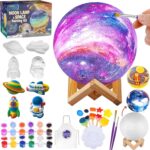
Crafty clients get to flex their DIY muscles with monthly project boxes that deliver all the materials and instructions needed to create gorgeous pieces, from wreaths to terrariums and beyond.
Plant/Flower Subscriptions

Bring year-round greenery into plant parent clients’ lives through monthly delivery of houseplants, succulents, or curated fresh flower arrangements. Ongoing gifts that quite literally help them watch their garden grow. Start here.
Snack/Candy Boxes
Satisfy cravings for something sweet by gifting subscriptions that deliver monthly assortments of artisanal chocolates, candy samples, or healthy snacks tailored to their tastes.
Tech/Gadget Box
Hook up techy clients with the latest and greatest gadgets delivered monthly like electronics, must-have gear, cool men’s accessories and more. Cutting-edge tech gifts.
Stationery/Planner Boxes
Help clients stay organized in style with monthly subscriptions that provide personalized planners, notecards, pens, notebooks, desk pads, and other stationery essentials. Outfit their office needs.
Pop Culture Boxes
Gift pop culture-loving clients monthly boxes celebrating their fandoms, filled with apparel, figurines, art, and collectibles from anime, scifi, comics, and more. Fuel their inner geek.
Clothing Subscription Boxes
Give clients effortless style through monthly deliveries of outfits, accessories, or pieces tailored to their size, style, and wardrobe needs, handpicked by stylists. Personal shopping made easy.
Pet Boxes
Pamper furry friends with monthly boxes filled with treats, toys, grooming accessories, and other goodies dogs and cats are sure to love. Ongoing gifts pet parents (and pets) appreciate.
Personal Growth Boxes
Help clients level up personally and professionally with monthly deliveries of self-improvement books, courses, journals, productivity tools, and other useful resources to inspire growth.
Eco-Friendly Box
Equip eco-conscious clients with earth-friendly essentials like reusable straws, produce bags, nontoxic skincare/cleaning supplies through monthly subscriptions promoting sustainability. Green gifting.
.m-in-content-ad {display:none;}
Keep the conversation going…
Over 10,000 of us are having daily conversations over in our free Facebook group and we’d love to see you there. Join us!




